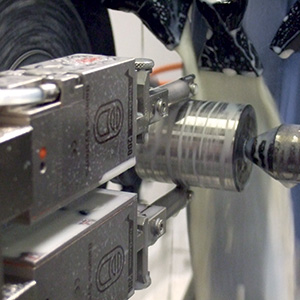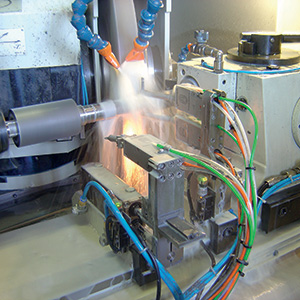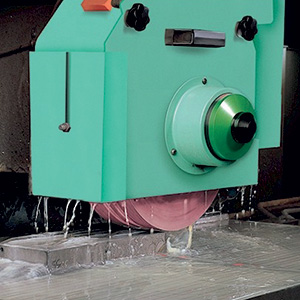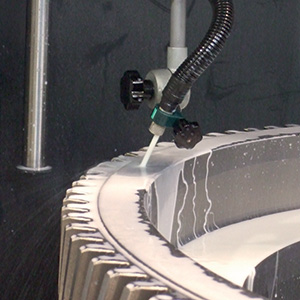The mechanical components subjected to coupling require tight geometrical tolerances, in addition to an excellent surface quality. They are normally produced by means of a grinding machine, which is able to ensure consistent quality and high productivity. The achievement of these features allows the increase of components over their lifetime and ensures an excellent operation with higher power and lower energy consumption, thanks to the frictions reduction.
To help you meet quality and productivity requirements, we offer a wide range of solutions which can be easily implemented both on new and existing machines in the field.
Automatic balancing
The balancing of the spindle and grinding wheel is an essential operation in order to achieve the machining’s surface quality and to ensure a long life of a rotary components.
We offer a wide range of balancing systems based on balancing heads which can be installed externally or internally through the spindle.
Control units are equipped both with cable and contact less (no-link) solutions and provide constant vibration monitoring. Our newly designed ‘Absolute Balancer®’ State-of-the-art technology, is characterized by unprecedented performance levels in terms of speed and precision balancing on 1 and 2 plane.
Gauging
The use of our in-process measuring systems allows to produce components in conformity with the most severe environmental conditions (warm-up, thermal shifts, chemical coolants, local or induced vibrations, etc.) and to operate in high-speed cycles. They include:
- Absolute measure of diameters;
- Measure of external and internal diameters, thickness, overstock division, taper, flagging and more;
- Features to measure both continuous and interrupted surfaces;
- Roundness analysis;
- Part-programs defined for each type of work-piece to be produced.
Touch Control
The exact identification of the instant when the tool touches the work-piece is an essential information to minimize the cycle time.
The identification of the contact condition between the tool (grinding wheel) and its dresser, allows to obtain a near perfect profile also optimizing removal of the grinding wheel surface, which is evident by the increase in the tool life and reducing environmental impact. Our solutions include:
- Power sensor and acoustic emission (AE) sensors wired or contact less;
- Frequency analysis for the refining of the optimal contact conditions;
- Multi-setup, part program and gap & crash functions;
- Multi-process control unit.





